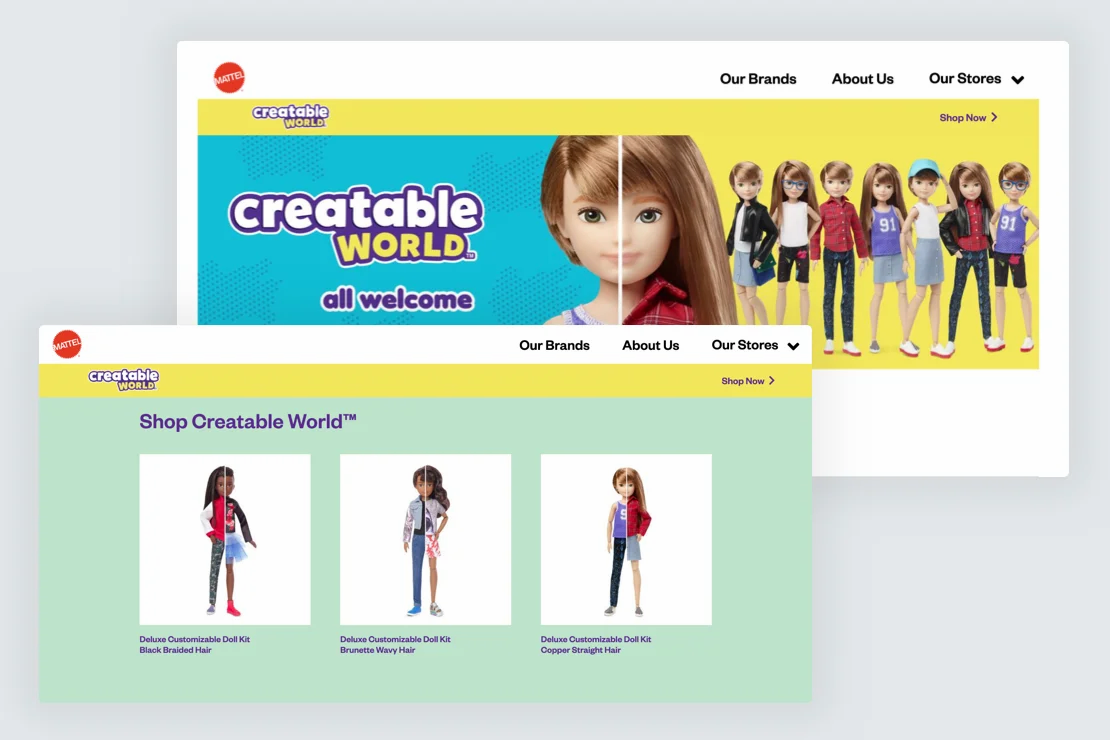
As a nonbinary trans person, I navigate an internet that isn’t designed for me. When the websites I use everyday weren’t made for me, I feel less engaged. It creates an uncomfortable experience, like an itch, making the web feel impersonal and hostile.
Determining the right target audience is an integral part of making a website. Can designers intentionally choose to make nonbinary people part of that specificity? If we design with the aim of tearing down barriers, we can create an internet that’s useful, relevant, and safe to as many people as possible, including nonbinary or gender nonconforming individuals.
Why gender and pronouns matter
I should probably back up and define some terms for people who aren’t familiar with nonbinary people. Gender is distinct from biological sex. A gender like “man” or “woman” is a role we play in society. Some people feel profoundly uncomfortable with the role they were assigned at birth, and are happier playing another. As a nonbinary person, I’m not strictly comfortable as either a man or a woman.
There are many ways to be nonbinary or gender nonconforming, and pronouns are a good example of that. There are nonbinary people who use “they/them” pronouns, but others use “she/her” or “he/him” or neopronouns (for example, “xie/xer”). There are “he/him” lesbians who were assigned female at birth and are still women. Gender is highly personal and central to who people are. An internet that’s designed for people with a broad range of gender identities and expressions would honor that.
If gender is treated as a deeply personal aspect of every individual’s humanity — one you can recognize and speak to with design — you can use that to make your designs more specific, exciting, and engaging for everyone.
Designing a gender-affirming web
Since there are lot of ways to be nonbinary, we need to avoid the pitfall of going from imagining there are only two genders to only three. At the same time, we shouldn’t approach design as if there’s only one gender — the human gender — and flatten all diversity entirely. Broadening your voice as a brand or service provider so much, would mean that you end up speaking to nobody.
If, instead, gender is treated as a deeply personal aspect of every individual’s humanity, and one you can recognize and speak to with design, you can use that to make your designs more specific, exciting, and engaging for everyone. Here are some ways we can do that:

Creatable World by Mattel aspires to make playing dolls more inclusive.
Rethinking our use of UX language
Create gender-neutral navigation: When collecting information on gender and honorifics is sometimes necessary, it would be wonderful to have options outside the binary. The typical layout for an online clothing store, for example, has “men’s” and “women’s” sections. Some websites avoid this trap. Rather than organizing by gender, organize by type of clothing (like pants, shits, skirts) and cut. They can also have their clothing modeled by trans and gender nonconforming models. For other brands, simply including a wider variety of gender expressions in their use of photography and visuals — doesn’t have to be every photo, even! — makes the experience of using their website more friendly.
Allow users to identify as they wish: Companies that gather medical information often need a user’s legal name and sex. However, changing names is a very common trans experience (including among nonbinary and gender nonconforming people). That’s a long process. The best websites I’ve used permit people to list their gender identity as well as their sex assigned at birth and also lets everyone choose a nickname. The websites who do this avoid “dead naming” trans people, which is respectful of both their identity and health. Many trans and gender nonconforming people experience gender dysphoria, and addressing them by the wrong name can be a trigger for that.

Q, the First Genderless Voice Assistant.
Treating user safety and consent with care
There are, unfortunately, hate groups whose members try to harm trans folks, including nonbinary people. I hope that websites will look out for the safety of trans people.
Be conscious of the data you collect: That means not collecting data on gender at all unless it’s vital, transparency about why collecting data is necessary and how it will be shared, and good moderation of discussion forums.
Allow personal info to stay discrete: Websites that commission or feature different creatives should not require those individuals to be easy to contact. We want a friendly web, but not so friendly we forget that the web can be dangerous for minorities.

An internet for everyone
A design experience that is consciously inclusive conveys an expectation of inclusivity that people will learn from and follow. When we take the time to design with gender nonconforming and nonbinary people, it’s more than a cosmetic change.
We’re using design to think about and respect human beings and care about their safety. That mindset carries into our other work. It benefits other minorities. It benefits cis users, who need safety and respect in their own ways. When we build an internet for everyone, it really does benefit everyone.